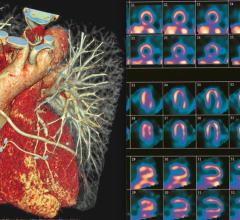
Image courtesy of Texas A&M University
March 23, 2016 — Recent research published in The American Journal of Cardiology and led by Stephen Crouse, Ph.D., is shedding light on the healthy cardiac parameters and blood pressure levels of collegiate American-style football (ASF) athletes.
Crouse, professor of kinesiology and joint professor of internal medicine at Texas A&M University, and his colleagues in the Department of Health and Kinesiology and the Health Science Center College of Medicine, studied 80 incoming Texas A&M football players. Data was collected over three years as part of a pre-participation physical exam. The purpose was to describe heart characteristics and blood pressure values in collegiate ASF athletes compared with normal values.
“Before this study, there weren’t baseline comparative benchmarks for screening and follow up of incoming NCAA [National Collegiate Athletic Association] football players for cardiac anatomical variations, blood pressure, and training effect,” said John Erwin, III, M.D., associate professor of internal medicine and co-author of this research. “These results should serve as a basis to better define normal and abnormal findings in athletes’ hearts.”
“The aspect of health in athletes is a really important component of what we do here at Texas A&M,” Crouse added. “Even though performance is very important, health of the athletes is critical.”
The heart trains just like any other muscle — it grows larger the more the athlete exercises. However, in the non-athlete population, a larger heart and thicker muscle can be associated with the risk of cardiovascular disease.
Football athletes are known to have larger hearts because, in part, they are larger people. This study confirmed that, finding enlarged hearts and increased ventricular wall thickness. The key is to adjust the heart size by the size of the individual to see if such adjustment brings the heart back into a normal range. If not, that could indicate there is an enlargement that may not be healthy.
“Our study doesn’t really tell us much about how well these athletes are going to perform on the field,” Crouse said. “We don’t say anything about having a bigger heart making you a better athlete. All we’re trying to do is get information that will help us make health judgments and help the athletes be healthier.”
Another aspect of cardiac health is blood pressure, and the researchers measured the occurrence of high blood pressure in football players. Researchers found that 64 percent of the study participants had pre-hypertension, meaning their blood pressure was elevated above what is normal but not enough to be considered high blood pressure. The study shows it is possible the elevated blood pressure represents an adaptation to the high-intensity training and could be reversed at the end of training.
Still, the researchers see these results as confirming the importance of monitoring athletes’ blood pressure on a regular basis throughout their college athletic career and beyond.
“What we would like to be able to do as time goes on is to follow these athletes from year to year as they train in our program to really be able to document what happens to their heart structure and function as we go through their training throughout their collegiate career,” Crouse said. “Hopefully we will be able to follow them after that and maybe we can track and see if there are certain kinds of cardiac issues that can predict them not being healthy in the future.”
For more information: www.ajconline.org


 January 23, 2024
January 23, 2024 








